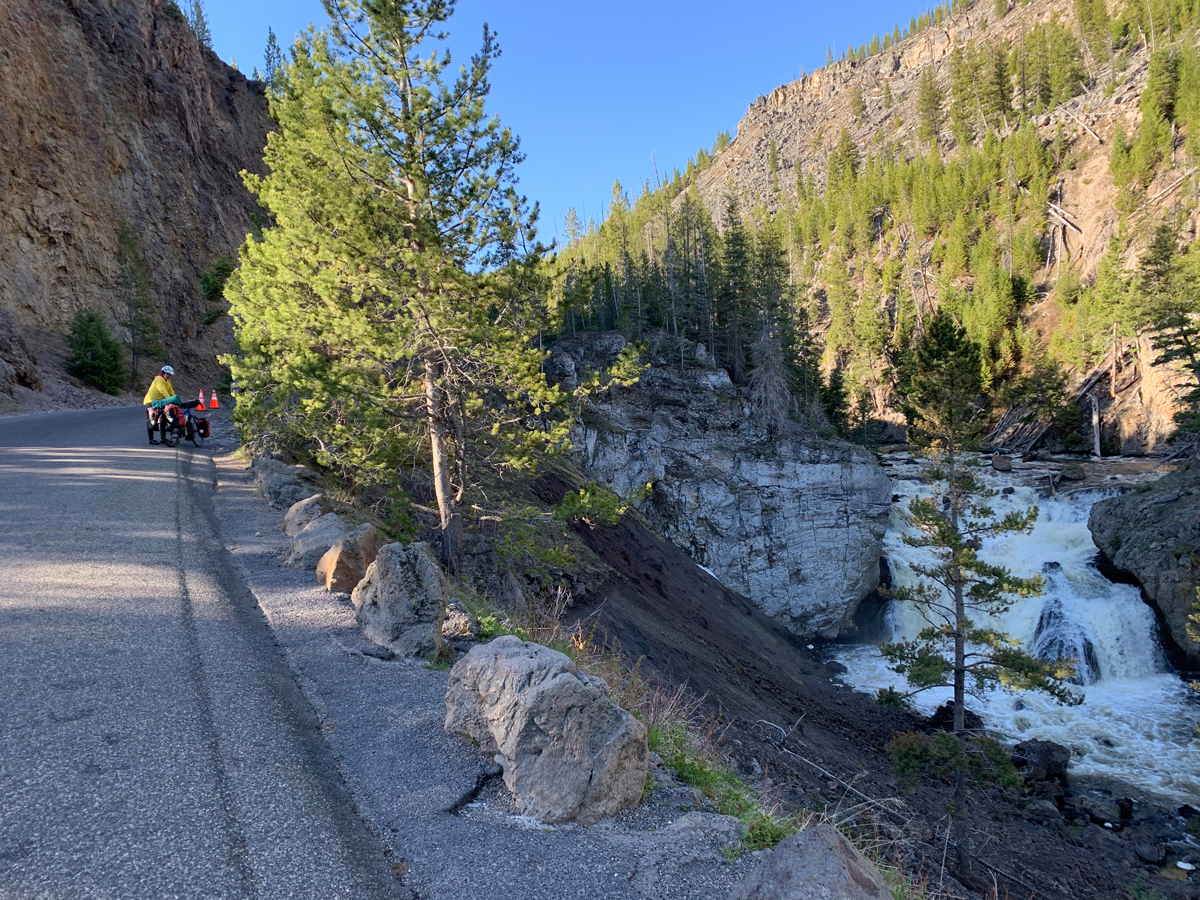By Lou Melini — Perhaps you have entered Yellowstone National Park on your bike with 3 other cyclists. The attendant at the entrance station tells your group that entry for bicycles is $20 per bike. You then look at an adjacent entrance booth at a car with 4 people realizing that the fee for the car is $35. Does that seem fair?
For the record, I am a fan of the National Parks and wish to see parks such as Yellowstone NP fully funded. To show my support I am or have been a member of the National Parks Foundation, Yellowstone Forever and Zion Forever, non-profits that support National Parks. To meet revenue shortfalls, Yellowstone NP, as one example, increased fees for cyclists by $8 and the fee for cars was raised $10. (The original proposal that cars pay $70 and cyclists $30.did not occur) For me, the hiker/biker sites are worth the admission price. Having a guaranteed place to camp beats my 1975 experience when I had to spend an hour asking (or begging) someone to share a site.

Despite my support for the parks, the hypothetical scenario that I presented above is unfair, and it was handled incorrectly. The National Park Service (NPS) Recreation Fee Management Manual states: “At parks with both a vehicle fee and a per-person fee, individuals entering together by a mode other than a single, private, non-commercial vehicle pay a total fee of no more than the vehicle fee.” For example, if four adults are traveling by bike together, this policy states they should pay no more than the vehicle fee.
This policy is not well known by cyclists or park officials and is not published on-line. The Adventure Cycling Association, a non-profit that supports traveling bicyclists recently found out about the regulation from a park staffer in D.C. Given the wording of the regulation it is unclear how many individuals can enter a park paying only the car fee. Let’s assume 4 for this article.
I presented a hypothetical scenario above, but it recently happened in real life. Over Memorial Day weekend of 2021, I rode through Yellowstone and Teton NP where I met a group of 6 girls traveling across the U.S. (OK, I am 70 so 6 females between 21 and 24 are girls) They were asked to pay $120 ($20/person) to enter Yellowstone. They told me that they then purchased an $80 pass (an annual pass I presume) and were then allowed in the park.
The National Park Service offers numerous “passes” that are annual or lifetime. The MOST likely passes to be used by traveling bicyclists are the $80 annual pass, the $20 annual senior pass or the $80 lifetime Senior Pass. The regulation concerning passes is: Each bicyclist is required to have a “per person” entrance pass or be covered under an annual or lifetime pass, which covers the owner and up to three additional cyclists. Passes require photo identification to verify ownership. The annual pass states that the pass is good “for the owner and up to 3 adults at sites that charge a per-person fee” The language also states that the pass “can be signed and shared by two main owners that are friends or family”. Given that the girls were not going to any other national parks, it would have been less expensive to go in with a “car” fee (or two car fees).
When I went to the entrance booth on my Memorial Day weekend trip, I presented my Senior Pass. The attendant looked at my touring buddy Chris. I immediately said that I am allowed to take others in with my pass. She replied: “Yes, I think you are correct”. I am not sure she knew the regulation but given how long the line of cars was she hurried us through.
My senior pass also gives me half-price camping. However if other cyclists in my group camp in a hiker/biker site, each person (or tent) is responsible for their own camping fee. If one cyclist holds a senior pass it may be cheaper for that pass holder to rent a regular campsite for the group (but a prior reservation may be necessary). The $80 Annual Pass only covers entrance fees to parks and federally managed lands.
Please note that individual national parks may have annual passes specific to that park that may or may not have specific language pertaining to bicycles, something that cyclists living close to a specific park could consider. For more information about park fees and passes go to the national park website or the particular park to which you are going.

